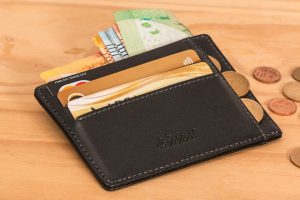Creating a budget is essential for financial success. In order to reach your goals and keep your spending in check, it’s vital that you make rules for yourself.

If you’re ready to create a budget for yourself but aren’t sure where to start, take a look at the essential steps.
Determine Your Monthly Income
The first thing you’ll need to get started is to know how much you’re working with. Take a look at all of the incoming resources you have and add them up.
Once you have your total income laid out on the table, it’s time to divide where it should go. Create different categories for yourself and set an amount you can spend for each one. Try to be realistic about where your money should be going and eliminate frivolities.
At the same time, allow some room for yourself to live a little. If you love buying beauty products, then create a category for it and set a reasonable amount to spend each month.
Keep Track Of Your Transactions
A lot of people feel like their paycheck disappears in a matter of days. They can’t figure out where it’s gone because they fail to track as they spend.
Tracking your spending helps you identify where you have room for improvement and how you can spend more wisely. You can either write it down in a spending journal or use an app on your phone. Do whatever is easiest for you to stay consistent.
Set Goals
It’s ideal to set goals for yourself. When you have a specific goal in mind, it makes saving money more rewarding. Each time that you make a smart move with your money, you’ll be reminded why you’re doing it.
Your goals can vary from how much you want to save each month to what you’re hoping to save for.
Cut Back On Your Spending
If you’re looking to save money, then you’ll need to make changes which will help you get there faster.
Determine the items in your budget which are things that you want vs. things that you need. The things which you’ve decided are your needs should be prioritized. The things that you determine as extra stuff that you can do without should be thrown out altogether.
Think about the smaller purchases that make a big difference. Buying lots of disposable products accumulate to far greater costs than multi-use alternatives. For example, rather than buying disposable razors, try using straight razors or safety razors that’ll last a lifetime. For more advice on this check out www.GetShaveAdvice.com
If you really want to save, you’ll be painfully honest with yourself and get rid of as much as possible. When you start to take a good look at what you really need, you begin to realize how much you waste your money on.
Make sure to stay consistent and regularly check in with your budget. Question whether you have room for improvement or whether you may be putting too many restrictions on yourself. It may take a few months to get into a comfortable rhythm.